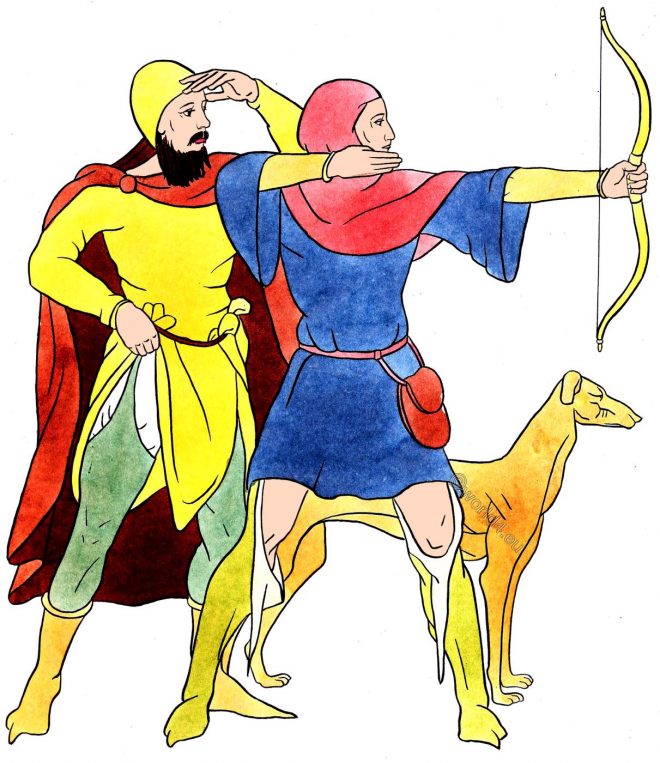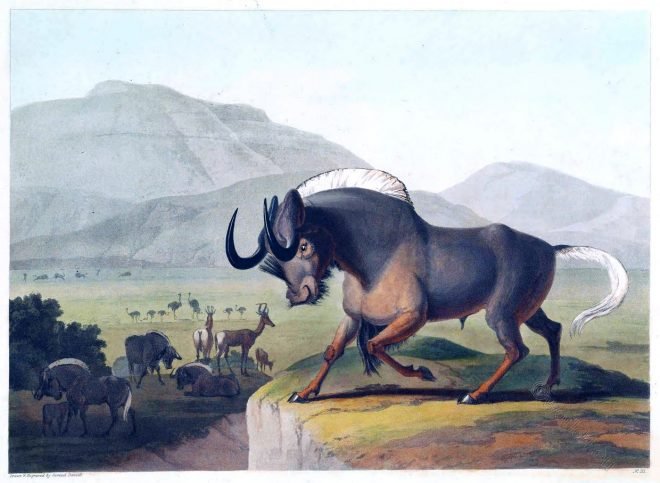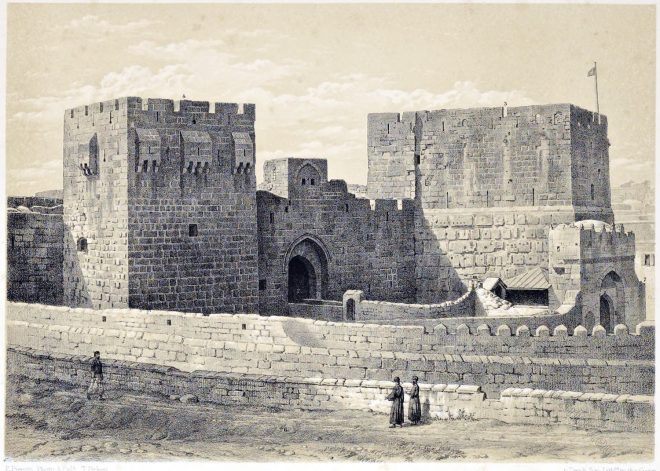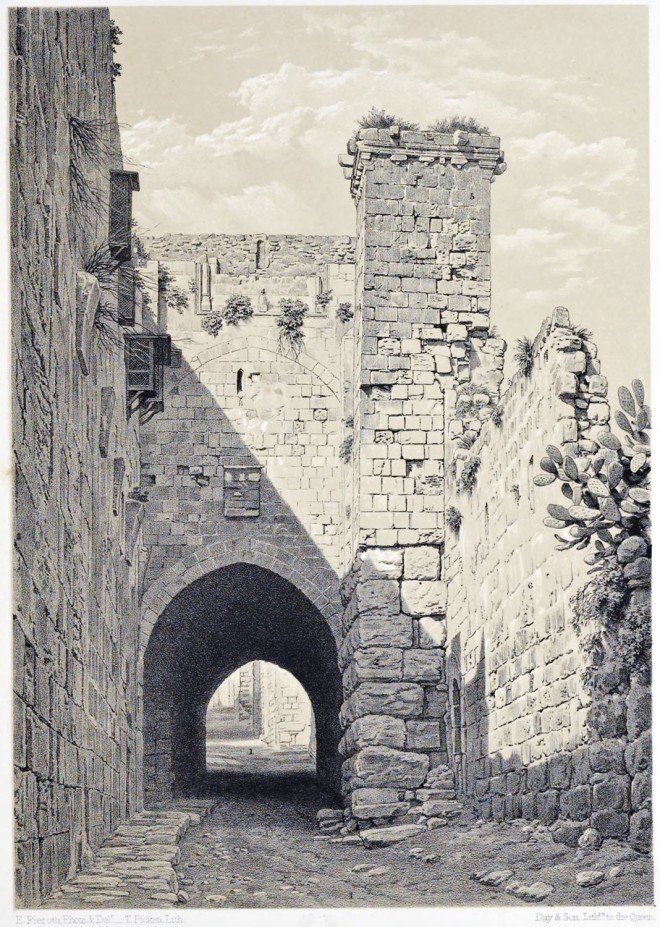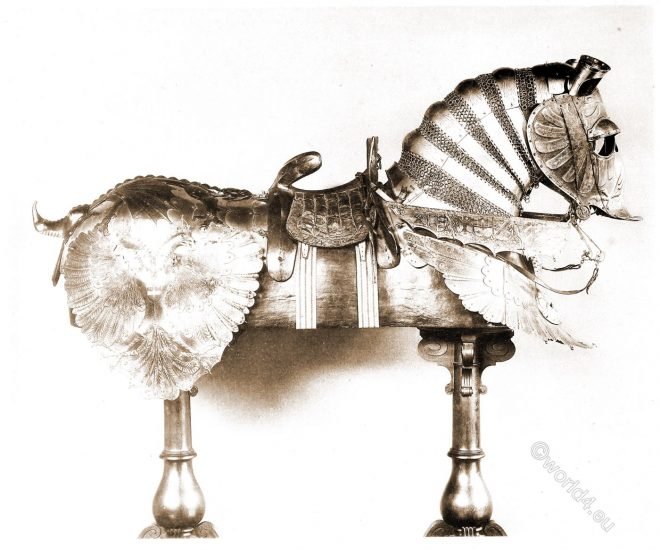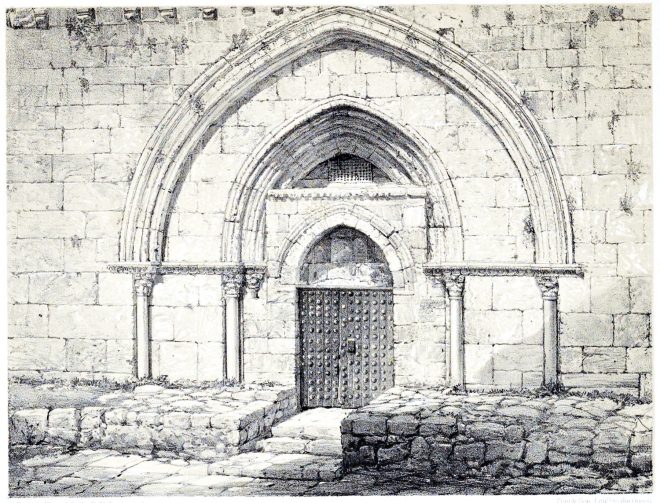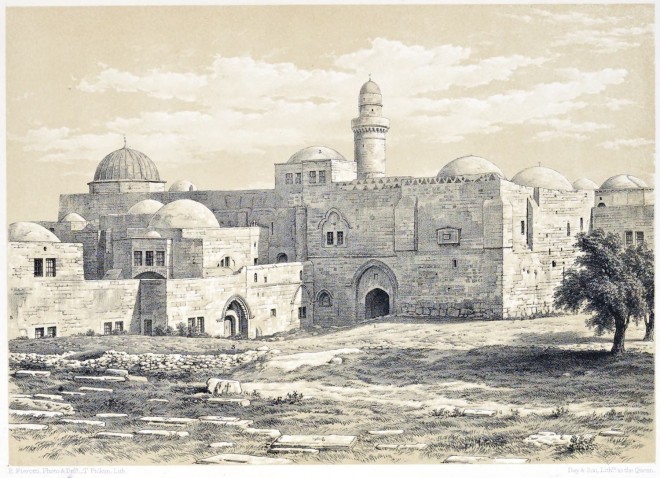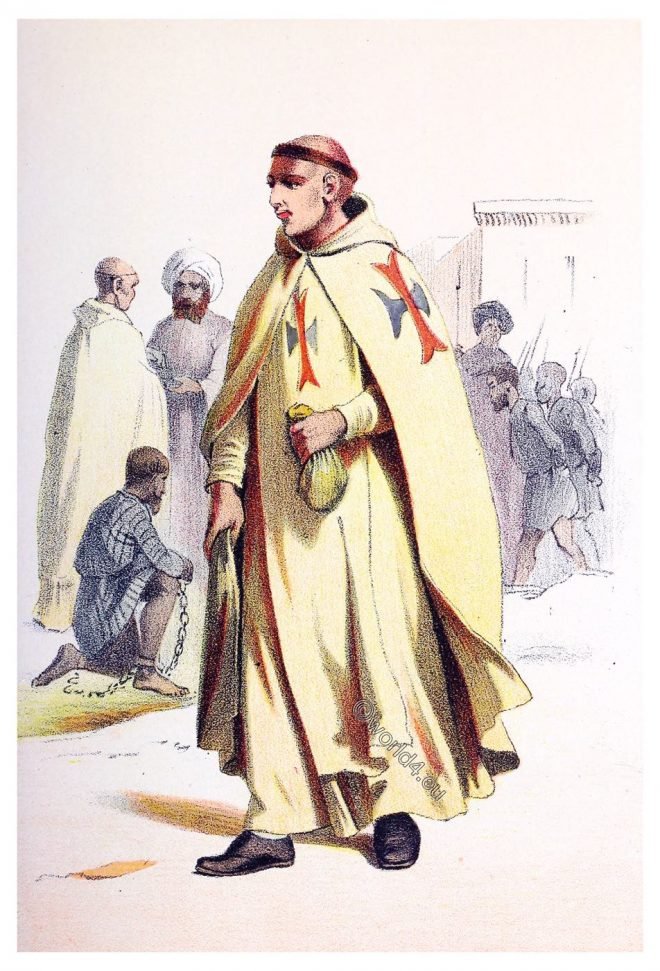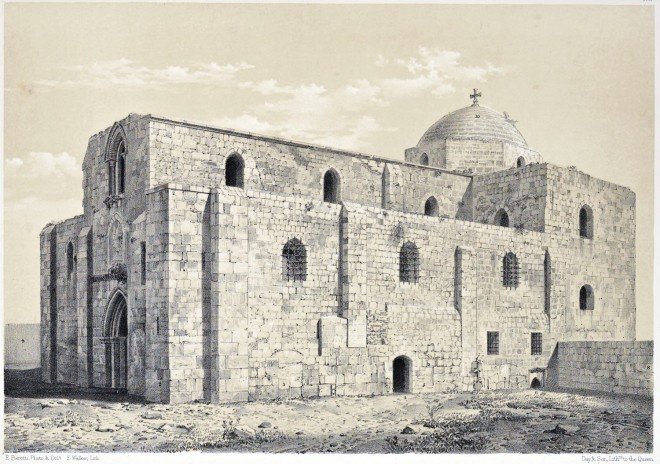Costumes 1000 to 1300 A.D. The two men in this picture might very well be, from the manner in which they are dressed, members of Robin Hood’s band.
THE GNOO. Drawn & Engravd by Samuel Daniell.
Wildebeest, also called the gnu. African scenery and animals by Samuel Daniell.
Plans and sections of the Royal Caverns, and of the Grotto of Jeremiah.
Ancient Entrance into the Royal Caverns. Grotto of Jeremiah. Cemetery of Dervishes. Fountain. Ancient Room of the period of S. Helena.
Jerusalem. The towers Phasaelus and Mariamne. Citadel Gate.
Citadel Gate. Citadel. Upper Road of Sion. Breast-work of a ditch. Tower Mariamne. Tower Phasaelus.
The Antonia fortress, or Antonia tower at Jerusalem.
Christian tradition sees Antonia Castle as the place where Jesus Christ is said to have been sentenced to death by Pontius Pilate.
Heavy horse armor of Emperor Maximilian I. from c. 1508.
This complete “Rossgelieger” is of excellent quality. The breastplate, called “Fürbug”. The saddle is a so-called “crib saddle”.
The Tomb of the Virgin Mary. The Cave of the Agony. Plans, sections.
Jerusalem Explored. Plans and sections of the Tomb of the Virgin Mary, and of the Cave of the Agony
The Cenacle and the Tomb of David of Mount Sion at Jerusalem.
View, plan and section of the Cenacle (Coenaculum); of the so-called tomb of David; and of the underground works of Mount Sion.
The Trinitarian Order in the Roman Catholic Church.
The Trinitarian Order is an order in the Roman Catholic Church. It was founded at the turn of the 13th century and was originally a monastic order dedicated to the spiritual struggle against Islam.
View of the Church of S. Anne in the Old City of Jerusalem.
View of the Church of S. Anne. Plans and sections. Interior and four details of ornamentation.

